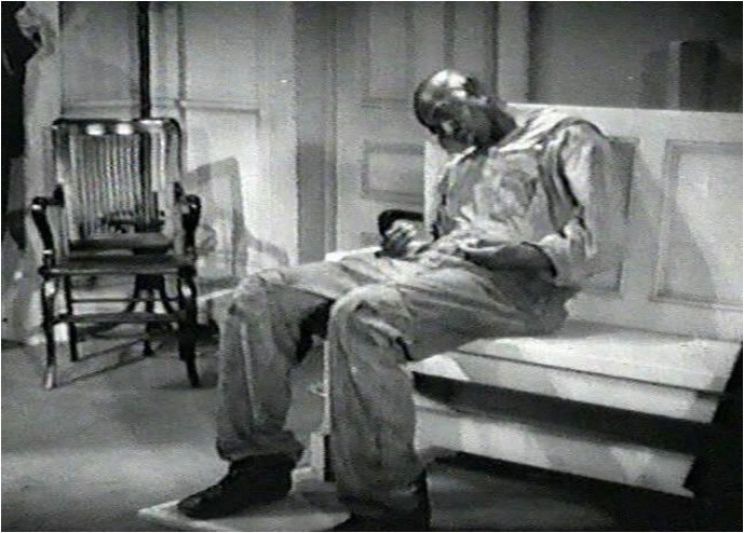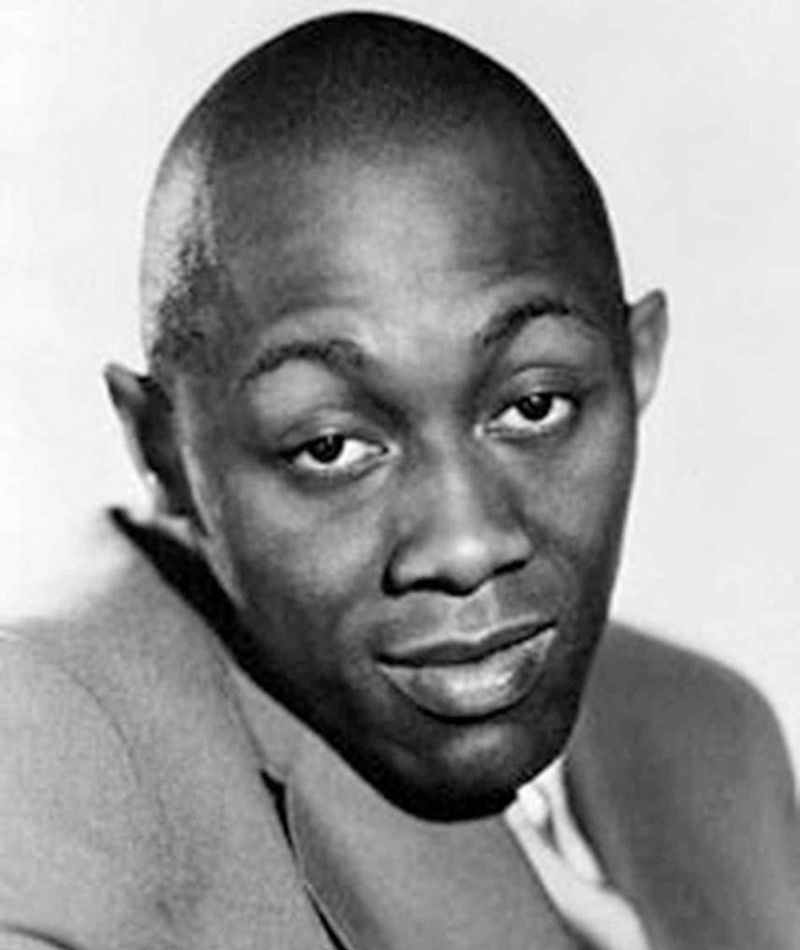Stepin Fetchit Meaning: A Deep Dive Into The Legacy And Cultural Impact
Stepin Fetchit meaning is a topic that has sparked significant discussions in the realm of cultural history and race relations in America. The name itself evokes strong emotions, as it represents one of the most controversial figures in the early days of American cinema. Understanding the true essence of Stepin Fetchit requires a nuanced exploration of both the man behind the persona and the societal context in which he operated.
Stepin Fetchit, originally born as Lincoln Theodore Monroe Andrew Perry, became a household name during the early 20th century. His portrayal of a lazy, shuffling, and subservient African American character left an indelible mark on American media. However, his legacy is far more complex than the stereotypes he perpetuated. This article delves into the meaning behind Stepin Fetchit, examining the man's life, the cultural significance of his performances, and the broader implications of his career.
By understanding the historical and cultural context in which Stepin Fetchit emerged, we can better grasp the complexities of his contributions to entertainment. This article will explore his life, the controversies surrounding his work, and the lasting impact of his legacy on race relations in media. Let’s embark on this journey to uncover the true meaning behind Stepin Fetchit.
Read also:Discover The Magic Of French Lick Train A Journey Through History And Scenic Beauty
Table of Contents
- Biography of Stepin Fetchit
- Early Life and Background
- Career Highlights and Achievements
- The Stereotypes Perpetuated by Stepin Fetchit
- Cultural Impact and Legacy
- Controversy Surrounding Stepin Fetchit
- Redemption and Recognition
- Understanding Stepin Fetchit Meaning
- Modern Perspective on Stepin Fetchit
- Conclusion: Reflecting on the Legacy
Biography of Stepin Fetchit
Early Life and Background
Lincoln Theodore Monroe Andrew Perry, better known by his stage name Stepin Fetchit, was born on May 30, 1892, in Key West, Florida. His early life was marked by hardship and struggle, as he grew up in a poor African American community. Despite these challenges, Perry developed a keen interest in entertainment from a young age. He began his career as a vaudeville performer, where he honed his comedic skills and developed the persona that would later define his career.
Stepin Fetchit meaning can be traced back to his early days in vaudeville, where he created a character that exaggerated the lazy, slow-witted stereotype of African Americans. This character became his trademark, earning him both praise and criticism throughout his career.
Career Highlights and Achievements
Stepin Fetchit’s career took off in the 1920s when he transitioned from vaudeville to film. He became the first African American actor to receive top billing in Hollywood, breaking barriers in an industry dominated by racial discrimination. Some of his most notable films include In Old Kentucky (1927) and The Gold Diggers of Paris (1938). His unique style of comedy and distinctive mannerisms made him a recognizable figure in American cinema.
Despite his success, Stepin Fetchit’s career was not without its challenges. He faced criticism from civil rights activists who accused him of perpetuating harmful stereotypes. However, he defended his work, arguing that it provided opportunities for other African American actors in an industry that offered them few roles.
The Stereotypes Perpetuated by Stepin Fetchit
One of the most controversial aspects of Stepin Fetchit’s career was his perpetuation of racial stereotypes. His character, characterized by a shuffling gait, exaggerated dialect, and subservient demeanor, reinforced negative perceptions of African Americans during a time of widespread racial discrimination. Critics argued that his performances reinforced the "coon" stereotype, which depicted African Americans as lazy, unintelligent, and inferior.
However, it’s important to note that Stepin Fetchit operated within the constraints of a deeply segregated society. At a time when opportunities for African American actors were severely limited, he used his platform to create roles for other Black performers. His performances, while problematic by today’s standards, were a product of the societal norms of his era.
Read also:How Did The Tragic Loss Of Aubreigh Wyatt Occur
Cultural Impact and Legacy
The cultural impact of Stepin Fetchit cannot be overstated. His performances left a lasting impression on American media, influencing both the representation of African Americans in film and the broader discourse on race relations. While his work was criticized for perpetuating stereotypes, it also opened doors for future generations of Black actors.
Today, Stepin Fetchit is viewed as both a symbol of the struggles faced by African Americans in the entertainment industry and a reminder of the progress that still needs to be made. His legacy serves as a catalyst for discussions about representation, diversity, and inclusion in media.
Controversy Surrounding Stepin Fetchit
Criticism from Civil Rights Activists
Stepin Fetchit faced significant criticism from civil rights activists, who viewed his performances as harmful to the African American community. Leaders such as W.E.B. Du Bois and Paul Robeson publicly condemned his work, arguing that it reinforced negative stereotypes and hindered the fight for racial equality.
Despite this criticism, Stepin Fetchit defended his choices, claiming that his performances were a form of satire intended to expose the absurdity of racial discrimination. He argued that his work provided opportunities for other African American actors and helped pave the way for greater representation in Hollywood.
Public Perception
Public perception of Stepin Fetchit has evolved over time. During the height of his career, he was celebrated as a groundbreaking figure in the entertainment industry. However, as societal attitudes toward race and representation shifted, his legacy became more polarizing.
Today, many view Stepin Fetchit as a complex figure whose contributions to entertainment must be understood within the context of his time. While his performances may have perpetuated harmful stereotypes, they also highlighted the challenges faced by African Americans in the entertainment industry.
Redemption and Recognition
In later years, Stepin Fetchit sought to redeem his legacy by speaking out about the challenges he faced in Hollywood. He emphasized the importance of creating opportunities for other African American actors and advocated for greater diversity in the entertainment industry. In 1976, he was inducted into the Black Filmmakers Hall of Fame, recognizing his contributions to the field.
His efforts to address the criticisms surrounding his career highlight the complexities of his legacy. While his performances may have perpetuated stereotypes, his advocacy for greater representation in Hollywood underscores his commitment to advancing the cause of racial equality.
Understanding Stepin Fetchit Meaning
Stepin Fetchit meaning extends beyond the character he portrayed on screen. It represents a complex intersection of art, culture, and societal norms. To truly understand his legacy, we must examine the historical and cultural context in which he operated. His performances, while controversial, were a product of the racial dynamics of his time.
By exploring the meaning behind Stepin Fetchit, we can gain a deeper appreciation for the challenges faced by African American actors in the early days of Hollywood. His legacy serves as a reminder of the progress that has been made in the realm of representation and the work that still needs to be done.
Modern Perspective on Stepin Fetchit
Representation in Media
From a modern perspective, Stepin Fetchit’s legacy is often viewed through the lens of representation in media. His performances, while problematic, highlight the need for greater diversity and inclusion in the entertainment industry. Today, filmmakers and actors are more conscious of the impact their work has on societal perceptions of race and identity.
Efforts to address the lack of representation in media have led to a greater emphasis on authentic storytelling and diverse casting. The lessons learned from Stepin Fetchit’s career underscore the importance of creating roles that reflect the complexity and richness of the African American experience.
Lessons Learned
The story of Stepin Fetchit offers valuable lessons for the entertainment industry and society at large. It highlights the importance of examining historical narratives with a critical eye and understanding the impact of media representation on societal perceptions. By learning from the past, we can work toward a more inclusive and equitable future.
Conclusion: Reflecting on the Legacy
Stepin Fetchit meaning is a multifaceted topic that requires a nuanced understanding of history, culture, and representation. His legacy, while controversial, serves as a powerful reminder of the challenges faced by African Americans in the entertainment industry. By examining his career and the broader context in which he operated, we can gain a deeper appreciation for the progress that has been made and the work that still needs to be done.
We invite you to reflect on the lessons learned from Stepin Fetchit’s career and consider how they apply to contemporary discussions about race and representation in media. Please leave your thoughts in the comments section below, share this article with your network, and explore other articles on our site for further insights into the intersection of culture and history.
References:
- “Stepin Fetchit: The Life and Times of Lincoln Perry,” by Mel Watkins.
- “The African American Experience in Cinema,” by Donald Bogle.
- “Hollywood’s African American Stars,” by Thomas Cripps.


